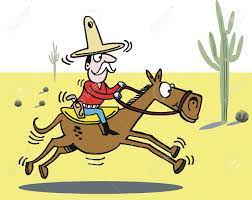By most accounts, Carl Czerny by the age of five was considered a prodigy. He studied with Beethoven for a few years and by the age of 15 was a highly regarded teacher. I can't help wondering what, if anything, in his formative years produced this prodigiousness. I don't know off-hand what exercises were popular during Czerny's youth—or even if there were any—at the close of the 18th century. Chances are, if my observations of prodigy children of today can be a guide, Czerny was a natural. By that I mean he was probably one of those rare occurrences in which everything musical comes together in one being. He no doubt allowed his playing mechanism, without having to consider the how-tos or wherefores, to move according to its design, without stretching and pulling to extremes or considering "strength." With the possible exception of scales and arpeggios, I doubt he played much in the way of exercises at all.
By the end of his life, Czerny had produced 861 opus numbers, more than1000 pieces for the piano. He is remembered today mostly for his vast number of exercises for piano students, exercises that are so ubiquitous that they found themselves parodied in scores by the likes of Debussy, Saint-Saens and others. Moskowski, another great pianist who wrote piano etudes, accused Czerny of "hating children."
Indeed, within a generation of his death, his reputation as a composer had so come under fire that Brahms felt moved to come to his defense. In a letter of 1878 to Clara Schumann, Brahms wrote: "I certainly think Czerny´s large pianoforte course Op. 500 is worthy of study, particularly in regard to what he says about Beethoven and the performance of his works, for he was a diligent and attentive pupil... Czerny´s fingering is particularly worthy for attention. In fact I think that people today ought to have more respect for this excellent man." The reference was to an essay Czerny wrote on the correct performance of the Beethoven sonatas.
It seems to me that somewhere along the line Czerny got the notion that pianists require physical strength, endurance, in order to play. (How can we make music if we have to endure something?) Do you sense an irony here? Yes, Czerny was able to play at the age of five in a way that was favorably compared to adult artists, and yet when he wrote his exercises for "finger dexterity" or to achieve "velocity," he thought pianists needed to drill repeatedly for physical strength. In fairness, though, to the best of my knowledge he doesn't actually use the words physical strength. If truth be told, he gives very little instruction at all. He tells us to "lift the fingers high" and to "keep a quiet wrist," but we are left with the notion that success will magically occur after hours of repetitions, which I refer to as mindless rote. Play the studies as much as you want. "You can play whatever you want, dear, as long as you play it correctly," I hear my teacher say. But of course, if you know how to play them correctly, then you don't need to play them at all. You can instead spend your precious practice time solving some technical issues in music you really would like to play.
This brings me to my point. Yes, there's a point. I've finally gotten around to putting my time and effort where my mouth has been yammering for 30 years. In my teaching I stress getting to the technical issues first, the first step in tackling a new piece. So, for those who like to play studies or who
would like to have something useful to work on as a daily routine, have a look at The Pianist's Guide to Practical Technique, a volume in which you will find technical "exercise" excerpts selected from standard repertoire. You'll then have a head start on concert repertoire.
 |














